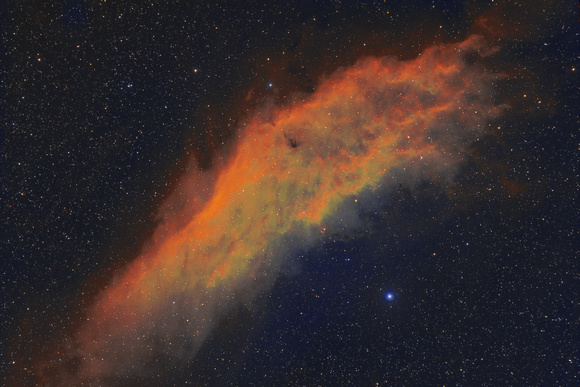BGC 1499 - California Revisited in SHO
THis is the same data as elsewhere, just using version 2 of the GHS script, pending release by Mike Cranfield, who did 98% of the work on this new version. In particular version 2, has both a dynamic preview and it has an option to employ the same "colour enhance" feature as currently exists with the "Arcsinh process" of Pixinsight, but your are no longer beholden to use the arcsinh transform function. I am still getting used to this functionality myself, and I'm not sure if I overdid it on this image.
NGC1499 - Mar. 2021
Televue 127is - AIS6200MM - NB(HSO)/RGB filters
The NGC1499 Nebula is a large, but faint collection of gases in Perseus. It gets its name from its resemblence to the shape of California, with LA somewhere near its brightest point. It is generally too faint to see visually. To enhance its appearance, this image was taken with narrow-band filters, which focus on the spectra of certain elements, particularly, in this case, Hydrogen. Since hydrogren (alpha) appears red, its presence was assigned to the red colour in this image making the California Nebula appear bright red. Hydrogen is also the element from which stars are created, and this nebula, in the next outer arm of the Milky way (about 1000 light years from here) is rich in both hydrogen and new stars.
The Nebula is re-emitting light energy thought to provided by the star ksi-Perseus (aka Menkib), which is the bright blue star located just below and to the right of the Nebula (appropriately located at Las Vegas, Nevada?).


